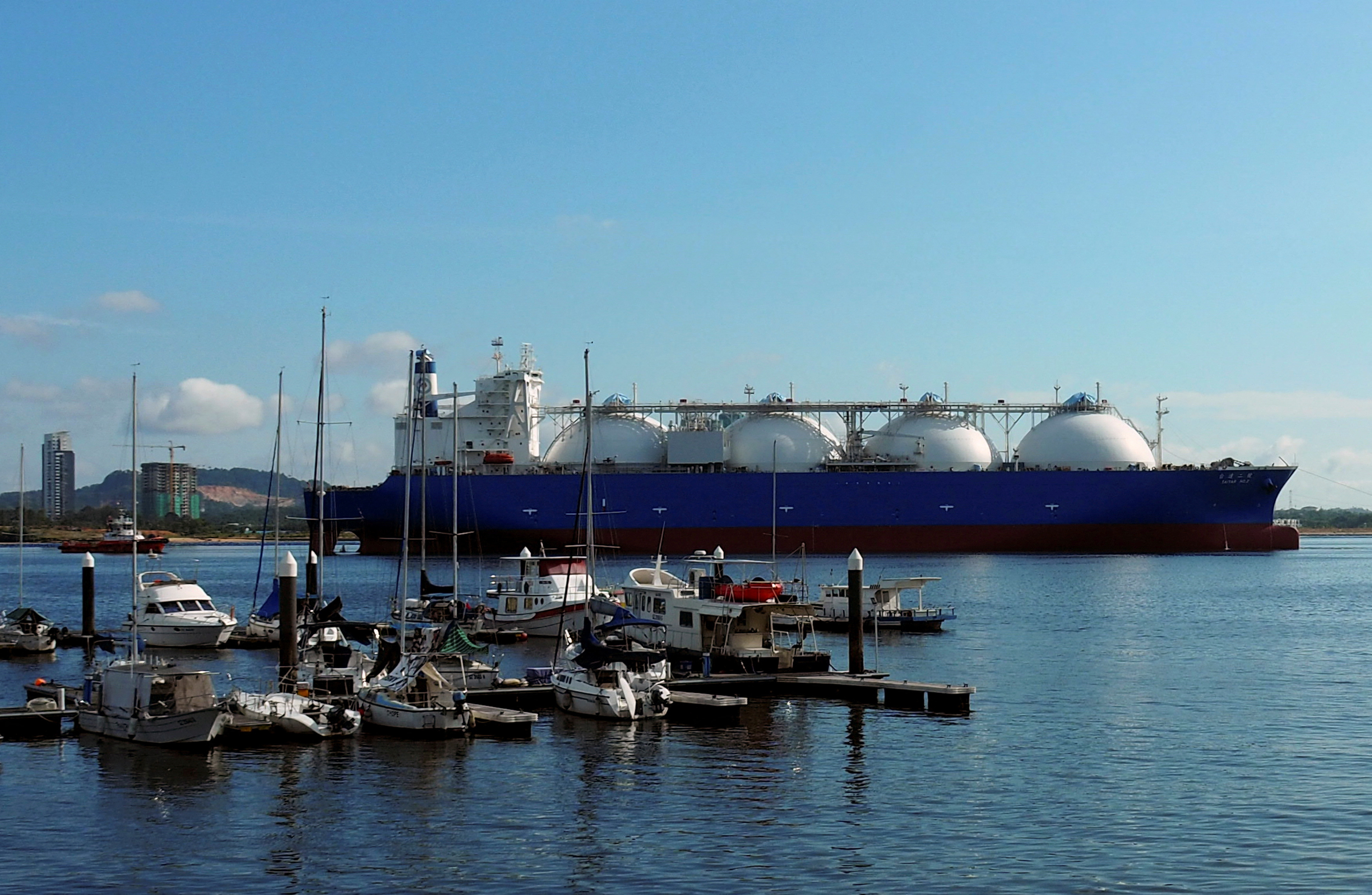I participated at FLAME 2024, Europe’s lead natural gas conference, in Amsterdam end April. The theme of the conference was ‘Navigating the energy trilemma’ and LNG featured prominently.
A key question was that with the next wave of US and Qatar LNG supply ramping up from 2026 and energy transition being prioritized, is there a future for new LNG projects beyond what is already in the pipeline? Climate advocates project to a declining gas demand globally beyond 2030. But is that correct?
Will there be increasing demand for LNG beyond 2030? Where is the future of such demand and will Europe commit to buying LNG on long-term contracts as the industry decarbonises?
My own presentation at the conference was on how East Med gas can contribute to this and prospects for export to European and global markets.
Europe
We are now in post-crisis mode, but a new reality is setting-in in Europe. Mild winter, energy efficiency, increase in renewables and industrial contraction led to lowering natural gas consumption by about 20%. Gas prices have come down but are expected to stay higher than pre-crisis levels by as much as $2/mmBTU (per about 1000 cubic feet).
However, energy transition is not happening as quickly as the Green Deal and others would like. Even though it is progressing, it looks increasingly challenging for Europe to achieve its Fit-for-55 targets. This means that it will still rely on gas into the 2030s, but demand will be declining.
By 2040 demand for LNG in Europe is forecast to decline to around 100 million tonnes per annum (mtpa). This introduces uncertainty and makes entering into long-term LNG contracts challenging.
The Green Deal has lost direction. It has passed its “glory days” and it is under increasing attack as voters and businesses worry about the cost of the transition. This is evidenced by the fact that more and more EU environmental legislation is being challenged and watered down. The European manufacturing industry has become extremely concerned about the extent of deindustrialisation on the continent.
After the elections in June, attention is expected to be turned to defence and security, making it very likely that the Green Deal will no longer be EU’s top priority. It may have to become more realistic and more responsive to citizen concerns by demonstrating that it provides clear economic and social benefits. The EU will need to face a number of realities, including the increasing challenges to its competitiveness and industry shrinkage. That will lead to natural gas remaining in demand for longer.
The future for gas is in Asia
Future LNG demand will be led by Asia, especially by China. Rapid population and economic growth will keep demand for natural gas high for longer, even after exponential growth in renewables.
With Asia expected to account for about half of global energy consumption by 2050 and with many countries looking to gas to support energy transition to help them move away from coal, the region’s needs for new, reliable, supplies are very real.
With concerns over air quality, China in particular is targeting to increase the share of natural gas in its energy mix from 8% in 2023 to 15% in 2030. Similarly, India is planning to increase gas usage from 6% now to 15% by 2030. Much of this will come from LNG imports.
Not only it looks quite likely that the market will absorb all new LNG, but the view at the conference was that by 2030 a gap will develop between supply and demand, requiring an increase in supply.
The expectation at the conference was that global LNG demand will increase to about 700mtpa by 2040, from over 400mtpa now. This growth in demand will be led by China, India and Japan. In China alone, LNG demand is expected to grow from about 70mtpa now to about 160mtpa by 2040.
Without a step change in climate policy and technological progress, natural gas and LNG will continue to play a substantial role in balancing intermittent renewables and meeting the expected growth in future global energy demand, led by Asia and Africa.
Most of that growth in LNG supply will be provided by the US and Qatar. But there will be room for Cyprus.
Is there a future for LNG exports from Cyprus?
With Chevron having already announced plans to export gas from Aphrodite to Egypt, and Eni about to follow the same route for gas from block 6, is there a future for LNG exports from Cyprus?
In my view this is in the hands of ExxonMobil. The company made an important gas discovery in block 10 in 2019 – Glaucus with an estimated 5-8 trllion cubic feet (tcf) of gas. It drilled an appraisal well in 2022 and plans to drill another this year.
The minister of energy announced last week that ExxonMobil has identified promising drilling targets in blocks 5 and 10 and intends to carry-out exploration drilling this year and next. He indicated there are hopeful signs for discoveries
ExxonMobil’s strategy in Cyprus is based on high risk-high reward. Back in 2019, ExxonMobil said it is looking for substantial quantities of gas, not just from one gas-field but likely several, to support its ultimate plan to build a liquefaction plant in Cyprus for LNG exports. I believe this is still the case. Commercial viability of such a plant improves with the number of liquefaction trains. Two or three such trains, with a capacity of 5mtpa each, will require gas quantities of the order of 10-15tcf. Assuming successful discoveries, the earliest this could happen is end of this decade or early in the next.
Such a plant could also accommodate Israeli gas, if still available for export, much the same way as was considered in 2012-2013, before the opportunity was lost.
That is the ultimate goal. Success will depend on global markets and prices, and the speed at which the energy transition progresses. But the view at the FLAME conference about the future of LNG was buoyant.
The possibilities for LNG exports from Cyprus are improving, but we should temper our expectations. First, we need to discover the gas, and then global gas markets are challenging and it takes time to get greenfield projects off the ground. However, if we were to discover the quantities of gas required to progress into major export projects, ExxonMobil, Chevron, Shell, Total and ENI are some of the most capable companies to achieve this.







Click here to change your cookie preferences